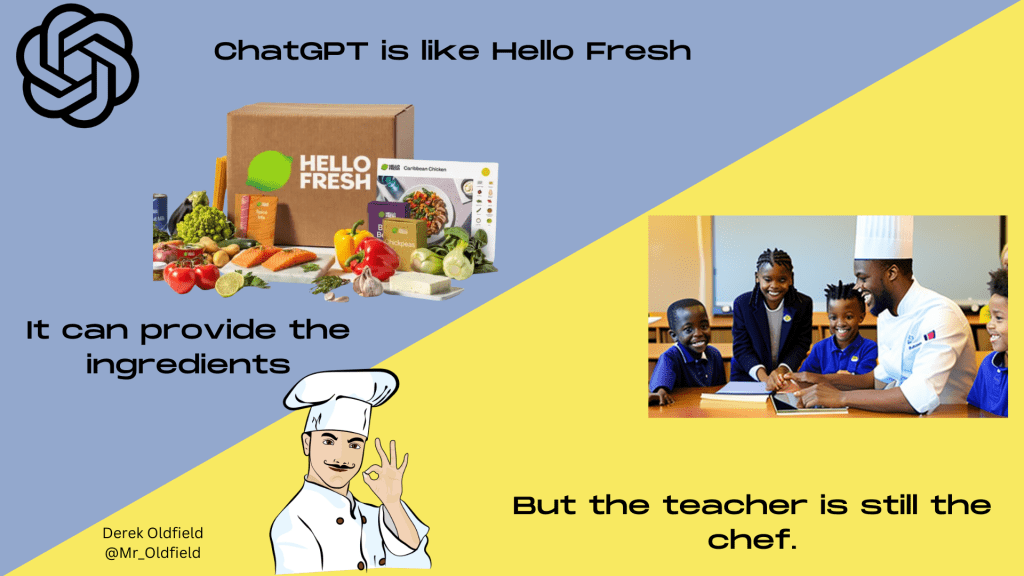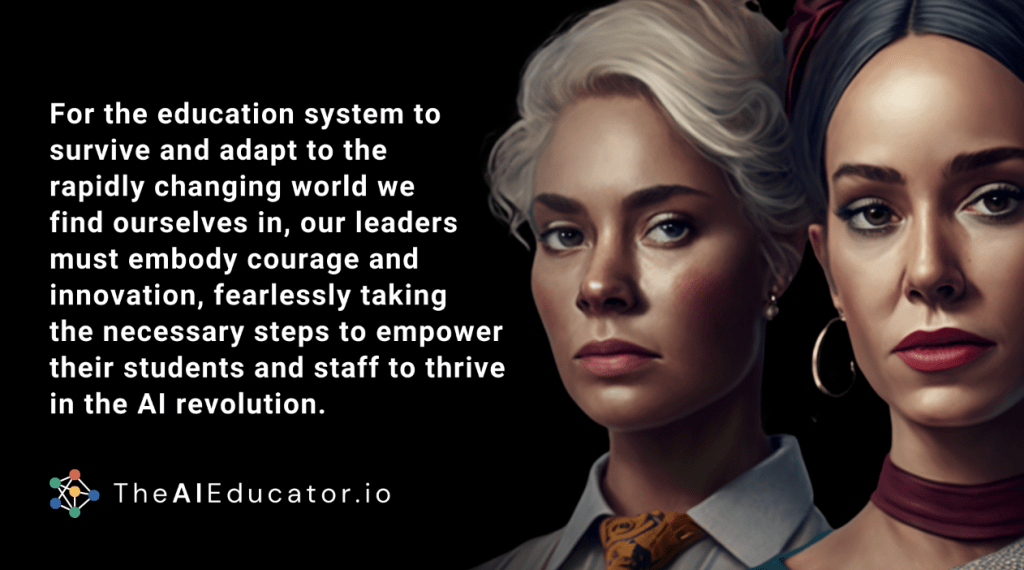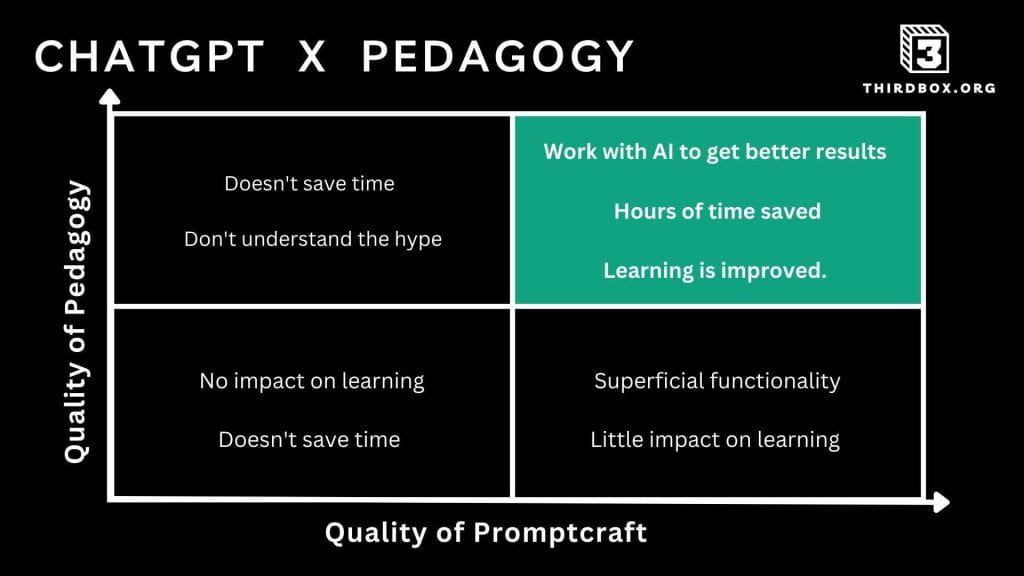I’ve been fascinated by the rapid growth of AI tools that support teachers. Since ChatGPT was made public back in November, hundreds of tools have surfaced and even more ideas have been shared across social media channels. My intention is to help you sort through those tools and ideas to present to you specific ways that AI can support educators. I want to begin, though, by addressing a question that has come up frequently in my own research around this topic. Will AI replace me as a teacher? The answer, even among the most prominent voices across the landscape of education, is no. Teachers using AI tools will, no doubt, work faster and more efficient than those teachers who don’t use AI tools. That could be happening now. Charity Dodd, from Learning Innovation Catalyst (LINC), provided this illustration recently and I made it into a graphic of my own:
I have previously shared my own version of 20 Ways Teachers Can Use ChatGPT to Save Time and Work Smarter and I suggest starting there if you’re still learning about ChatGPT and the kinds of prompts you can ask this AI model.
Ways Teachers Can Use ChatGPT by Derek Oldfield
Dan Fitzpatrick ran a poll on Twitter asking teachers which tasks are most likely to eat into your own personal time and the results are below.

Credit to Dan for selecting these three areas of need. I support and inspire teachers primarily at the secondary level and I can echo these concerns about time spent grading or giving feedback, creating content, and planning dynamic lessons. Let’s dig into ways AI tools can support these processes.
Grading or Giving Feedback
You may be thinking, well can’t we just ask ChatGPT or other generative AI language models for a rubric based on our assignment? Yes, you can! I’m learning more and more about prompt engineering and that will most certainly be a skill we’re all going to sharpen the more we use AI tools. I really like Dan Fitzpatrick’s PREP model of prompt-writing. Let’s take this example of an 8th grade teacher. The prompt: Create a rubric for a grade 8 writing essay. You are an expert teacher. The essay is about song lyrics. Students are to select a song with lyrics that they can identify with. The essay should explain why they selected that song and how they identify with the song lyrics. Students should identify the theme and message of the lyrics in their essay.
The follow-up to that prompt would be to ask ChatGPT to score a student’s paper according to the rubric, but to be practical, we probably aren’t doing that with 120+ essays and unless you upgrade your ChatGPT account, I’m not sure you’re going to be granted that many prompts in a single day. But the ability is coming! It’s coming to word processors like Google Docs and Microsoft Word. In the near future I’m predicting we’ll be able to access generative AI like ChatGPT inside of Microsoft Word or Google Docs and the AI will provide feedback to written work automatically. For now, get inspiration for your own rubrics by brainstorming with ChatGPT.
Creating Content and Planning Lessons
This is probably the category in which generative AI has exploded the most in the recent months. I could never include every tool here, but I’ll include a few that have potential and certainly fall under the purpose of saving teachers time.
- Curipod.ai Curipod will generate an entire interactive lesson from a single prompt. Curipod has already grown in its list of features. I imagine with enough funding this product will be around for a while. I’ll share a sample of my experience with Curipod, but you can access the video of my initial experience here. My opinion: this might provide ingredients, but as I often do with recipes, I would add a bit of my own spice to this lesson. Could this save time? Absolutely.

- Conker.ai takes a single prompt and generates assessment questions from that prompt. The questions can then be exported into a Google form. So in a matter of seconds, teachers can have formative assessment questions in a Google form.
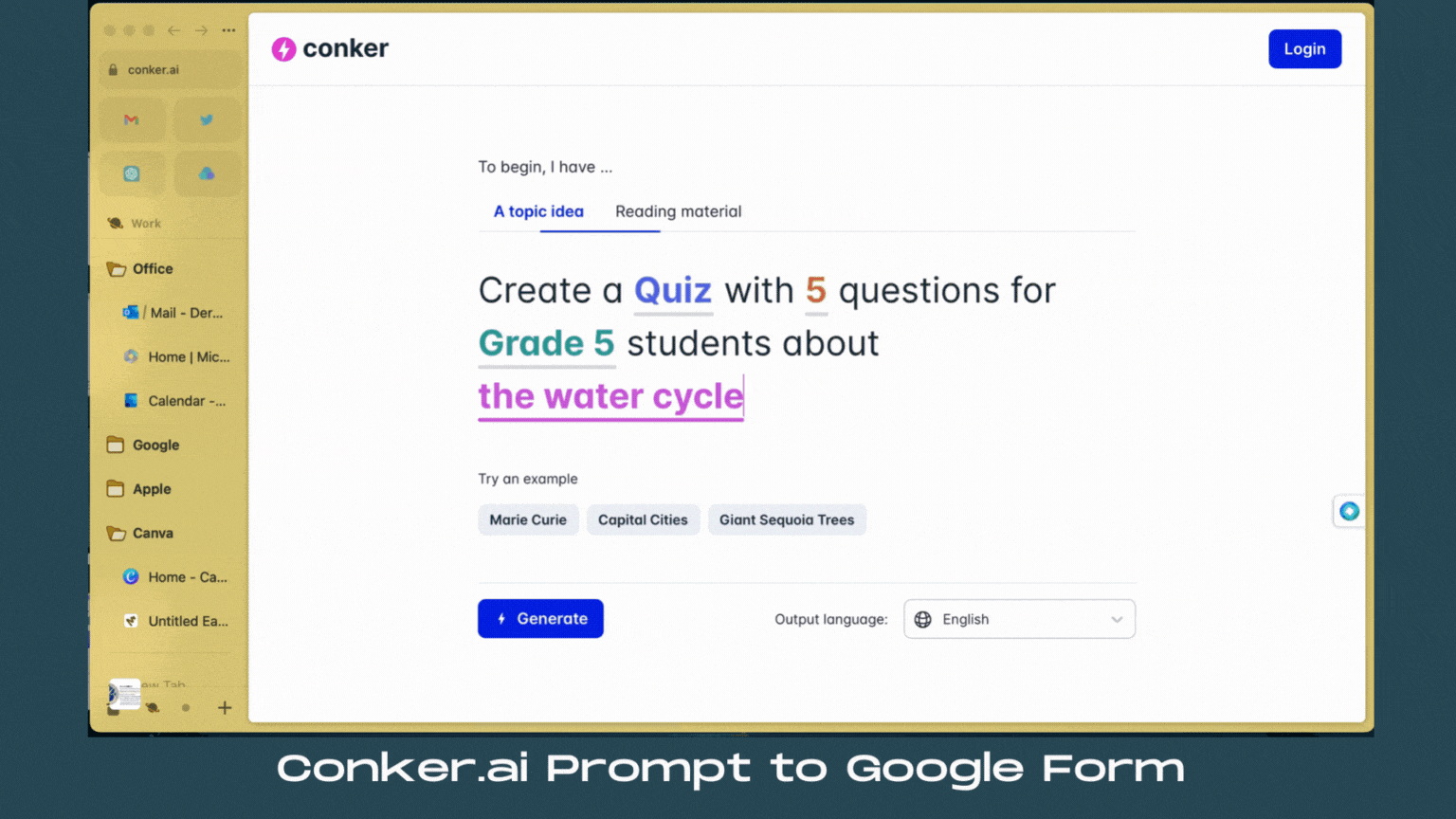
- ChatGPT can build an impressive lesson with the right prompt(s). In this sample, I take the PREP model and ask for a lesson generated from a TedTalk topic. The TedTalk is on YouTube. If a teacher was using an article or a video as the center of their lesson, ChatGPT can generate a lot of content based on that video or article. For the YouTube video, I copied the transcript of the video and pasted that into the prompt using the PREP model. My entire prompt:
Write a lesson. You are an expert at writing quality lessons that engage students and progress their learning. Write a set of lesson objectives. Create an engaging opening task that sets the context for the lesson. Write three paragraphs based on the content. Use short sentences that are packed full of meaning and key learning content. Include a multiple choice question at the end of each paragraph that tests students learning of the paragraph. Add the answer for the teacher. Add a list of subject-specific terms and simple definitions. Write a set of questions based on the content. Use Bloom’s Taxonomy. Create a group task based on the content. This is for grade 6 students. Make the reading age 12 years old. The content: (I pasted the transcript of a YouTube video)
This was one of my most impressive results from ChatGPT but I think it was most impressive because the prompt was of higher quality. The better the prompt, the better the result. The questions were great, the group project was good. These were good ingredients that likely would yield a palatable dining experience on their own. Would this save teachers time? Yes.
- Charity Dodd @CharityDodd introduced me to this idea and I think it has merit. Teachers can use ChatGPT to provide an adaptive assessment to students. I see this working most effectively as a student-led station. ChatGPT will provide questions to students and will increase or decrease the complexity of those questions based on the student response. With the right prompt, this will work.
You will create an adaptive assessment. You will generate a reading passage for a grade 5 student. You will create a reading comprehension question. If I answer the question correctly, you will ask a harder question. If I answer the question incorrectly, you will ask an easier question.
Obviously my prompt below was based on reading comprehension but this could be math problems, science concepts, or almost any topic you happen to be studying. The key, again, is in the prompt. What was not captured in the GIF below? I got an answer wrong just after the video cut. ChatGPT not only provided the correct response but it provided supporting details directing me to that information in the passage. That’s amazing.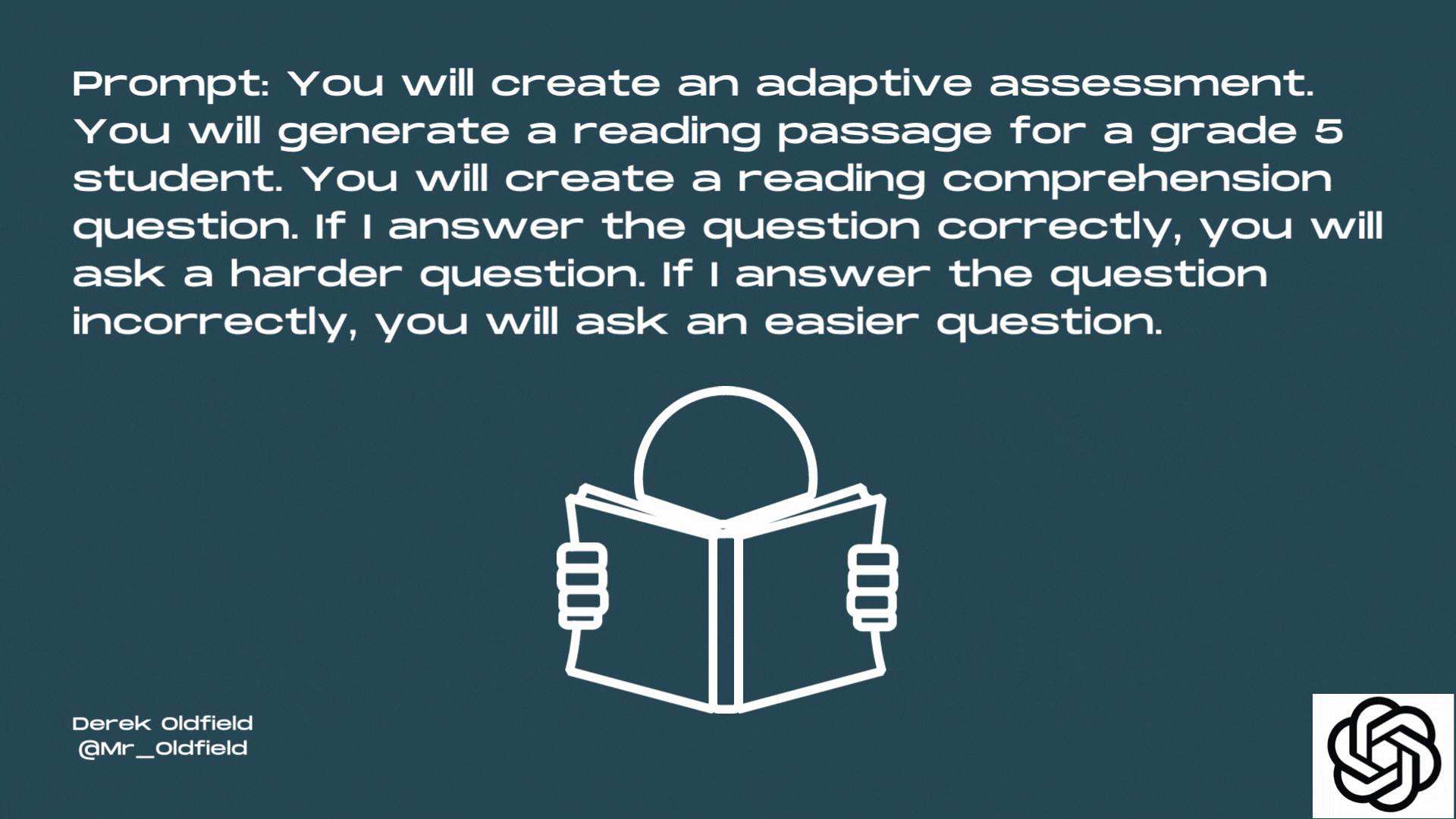
Conclusion
Dan Fitzpatrick released this article over the weekend titled 21 Ways to be a Leader in the AI Era.
His call is clear and powerful.
A rush of tools and ideas have surfaced since ChatGPT became public on November 30, 2022. That trend will likely continue if not increase in its potency. Districts, schools, and leaders alike will need to sort through these tools to empower their staff to get better results, save time, and improve learning. I like this matrix related to ChatGPT and pedagogy. I used this filter when deciding which tools to share in this post and I think it’s a necessary frame to keep around during this time.

